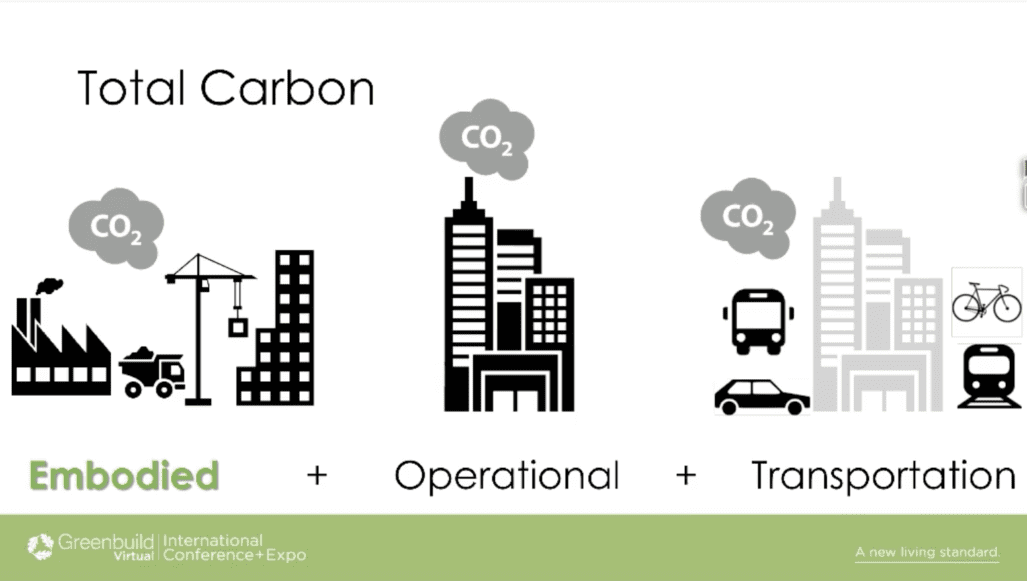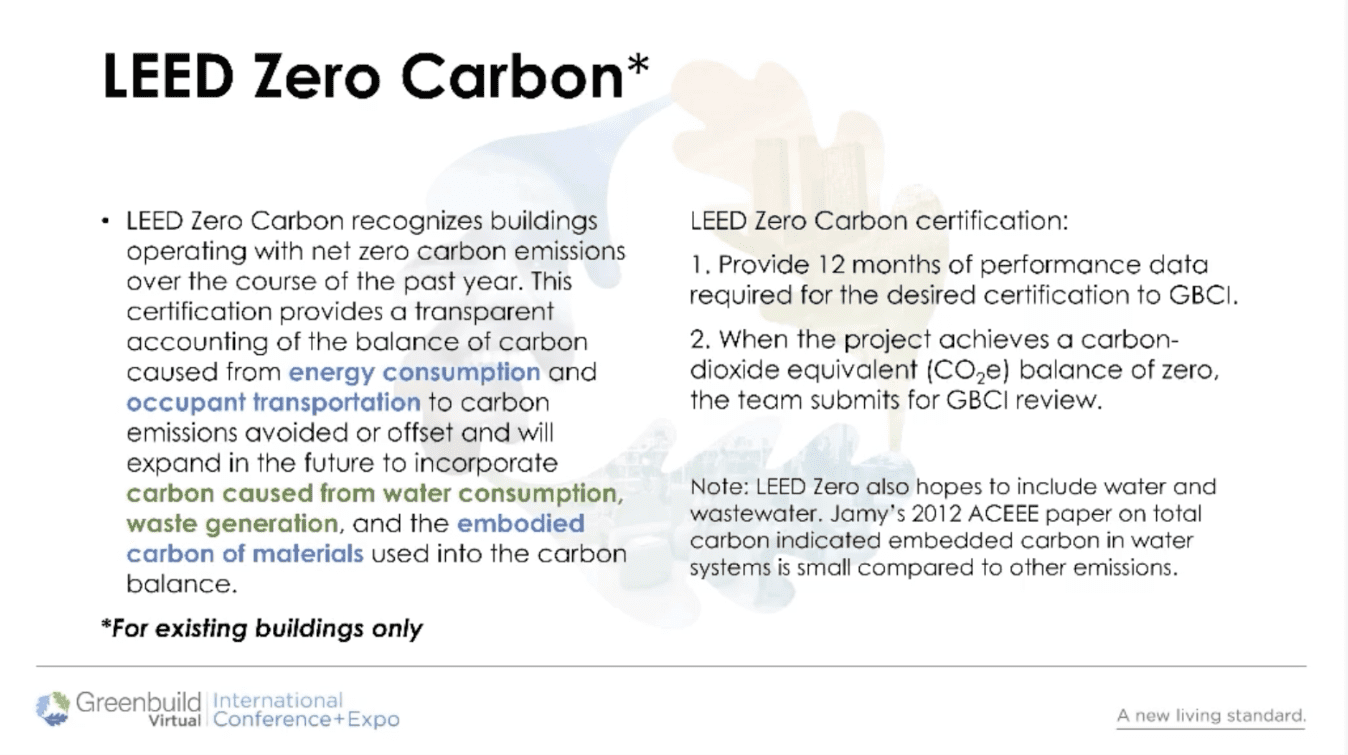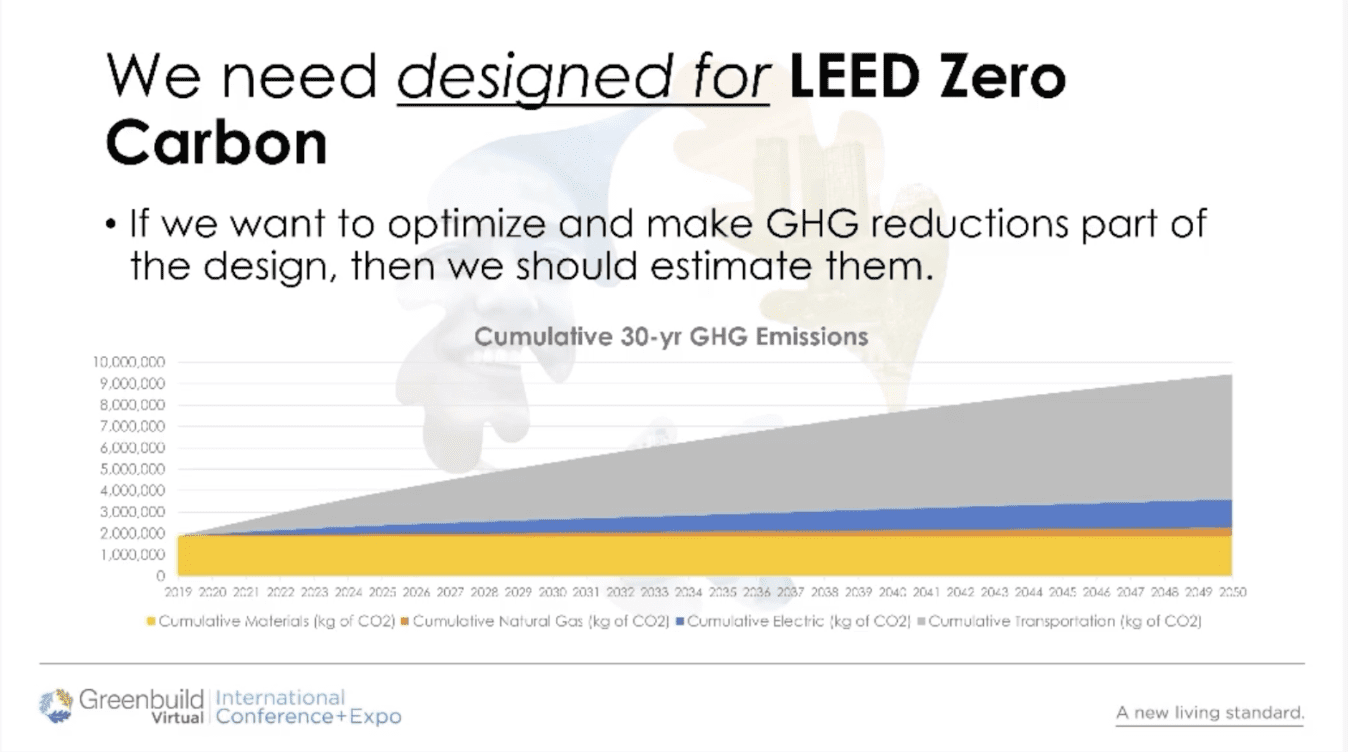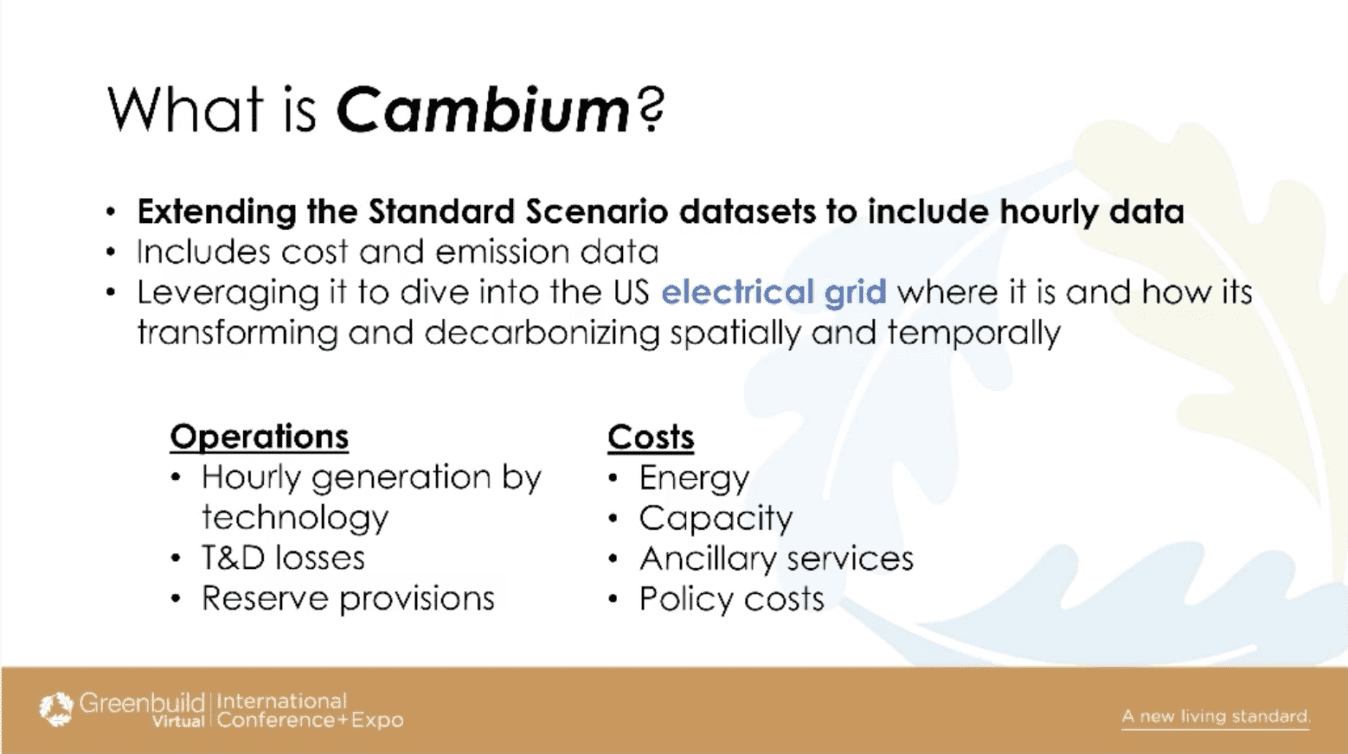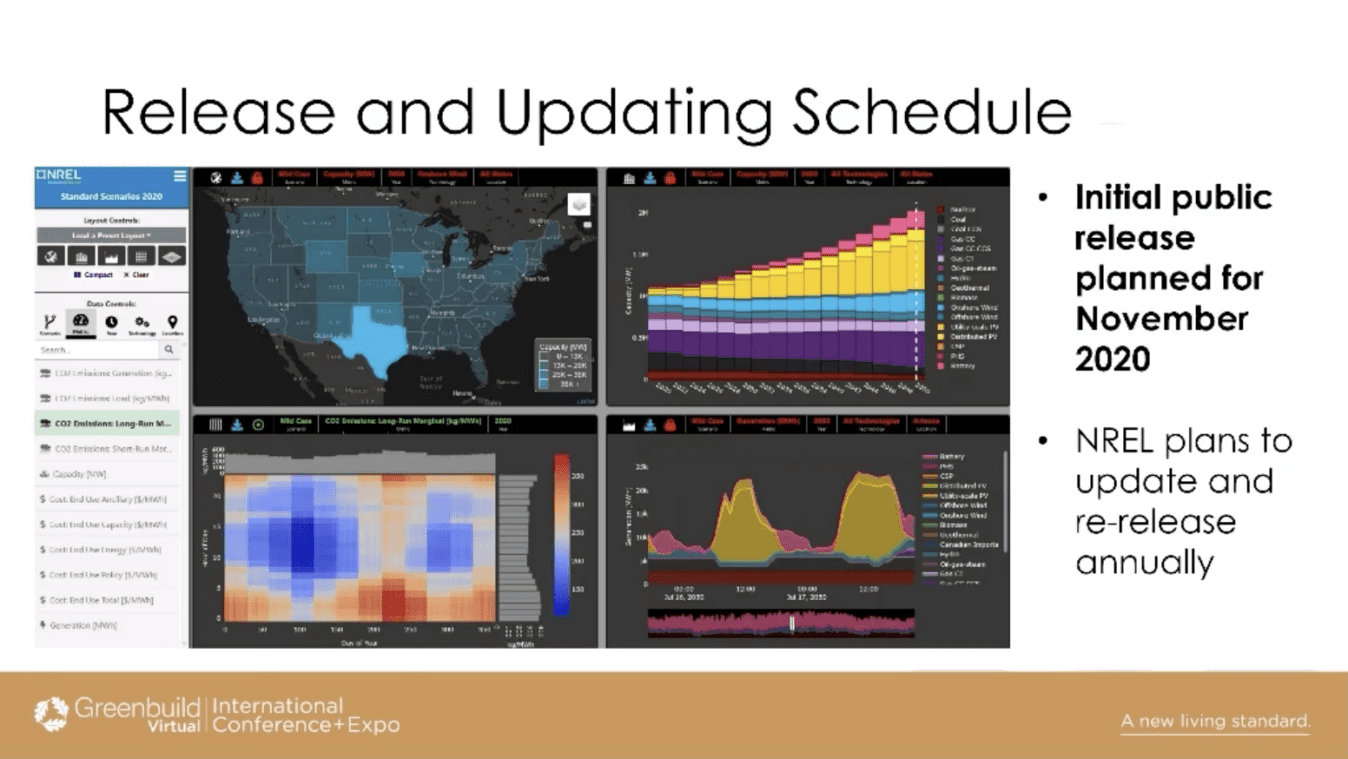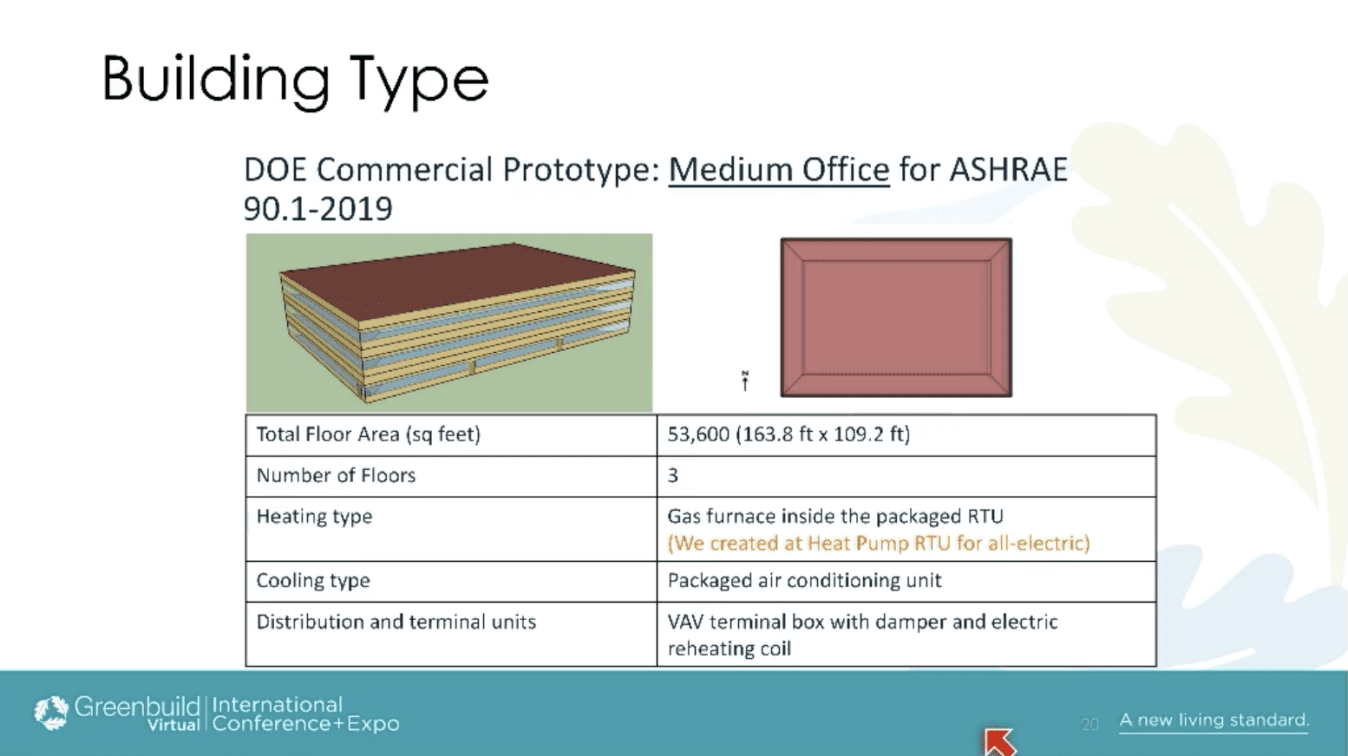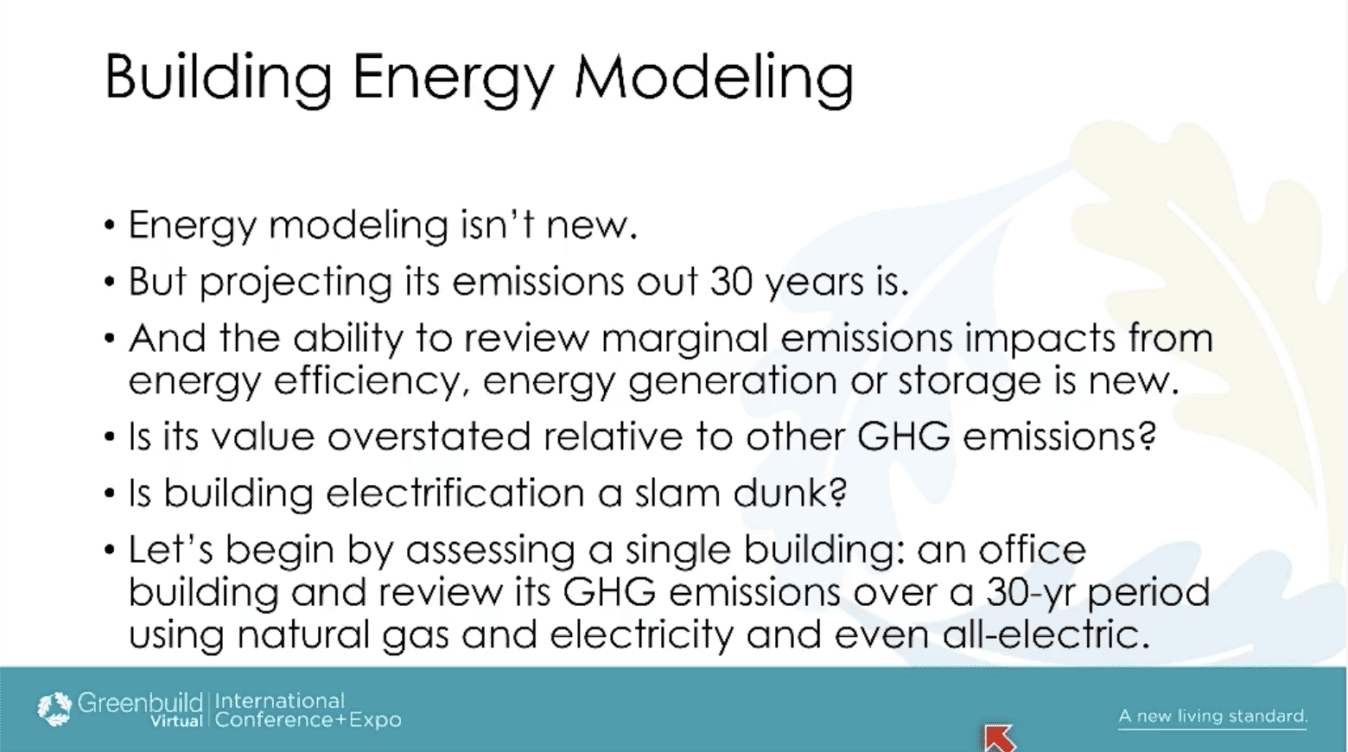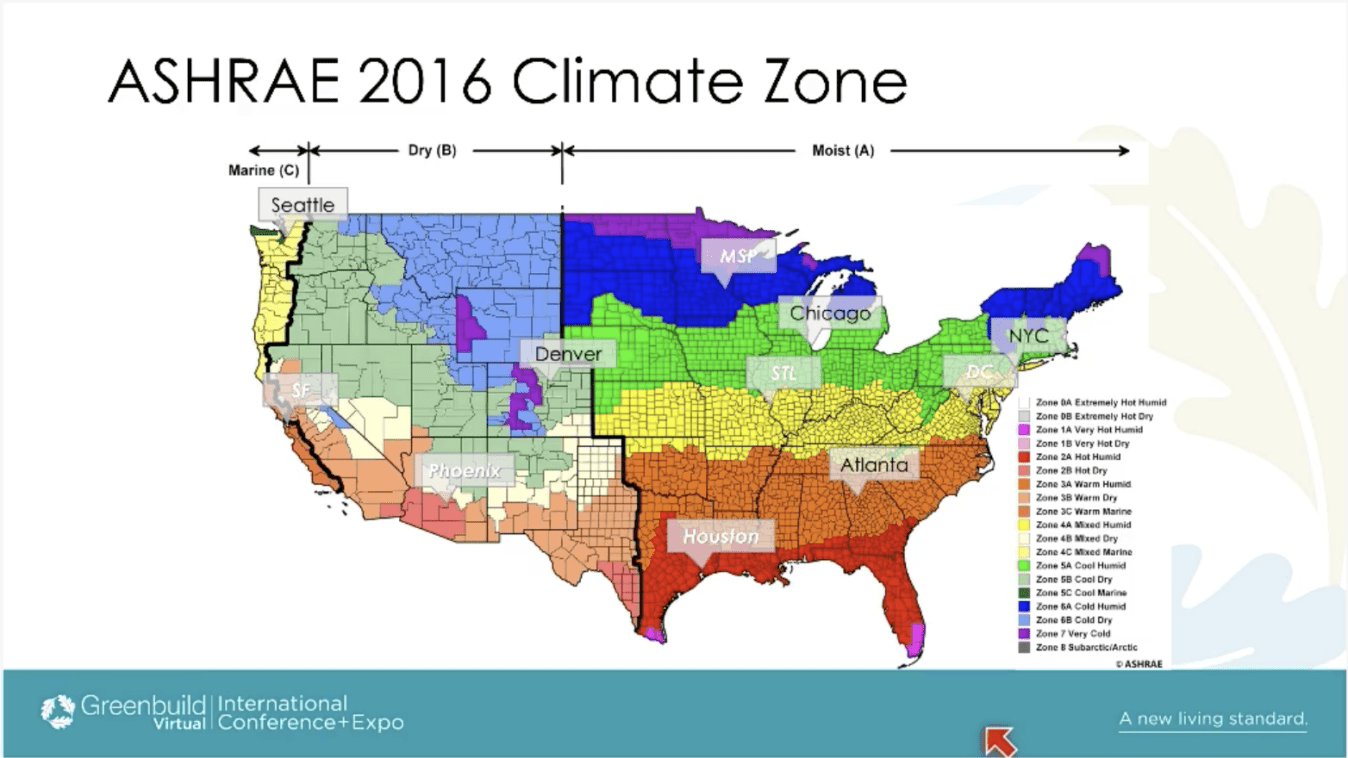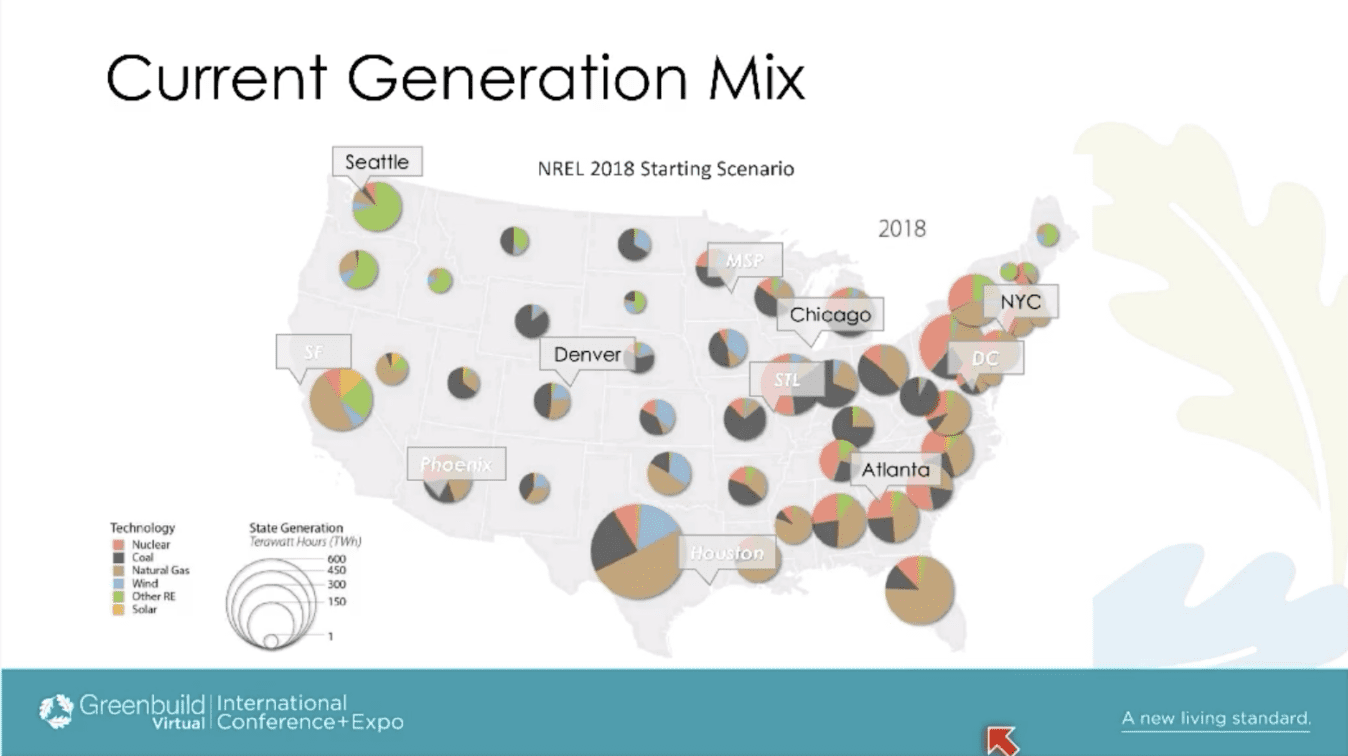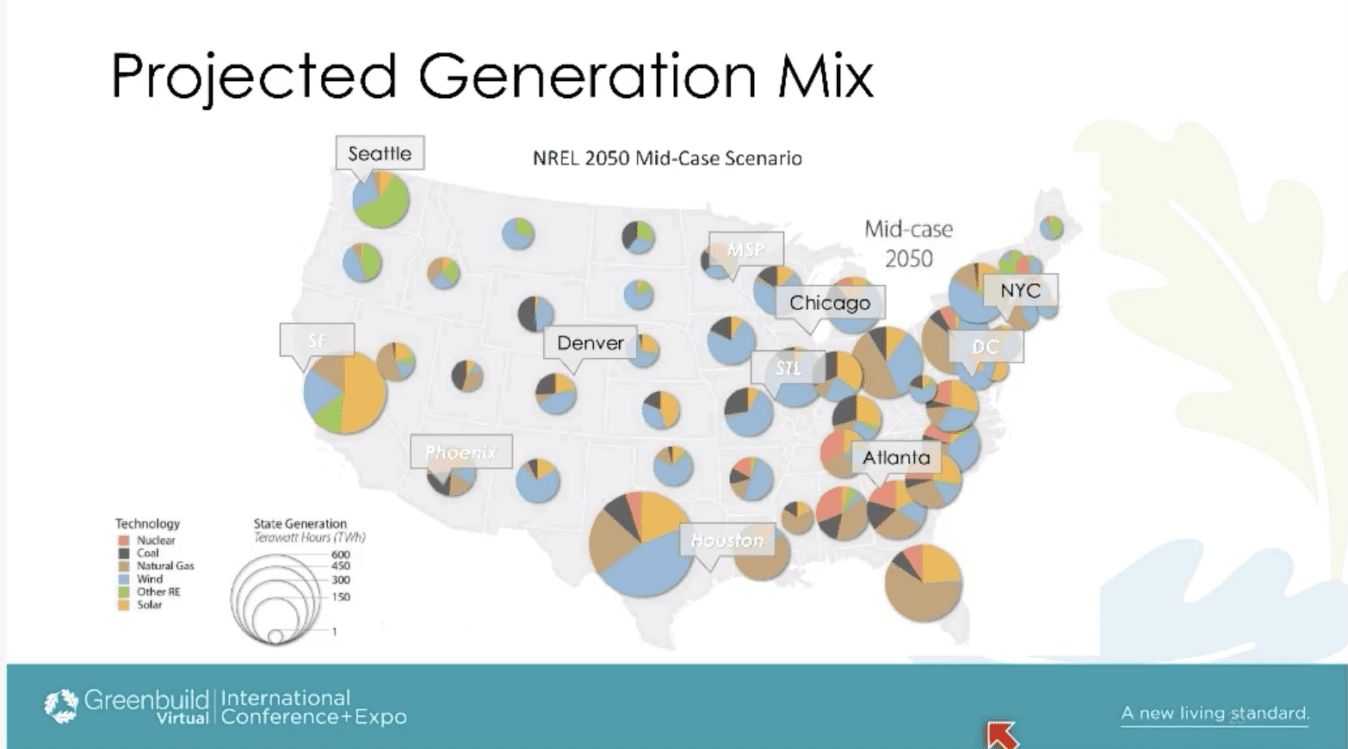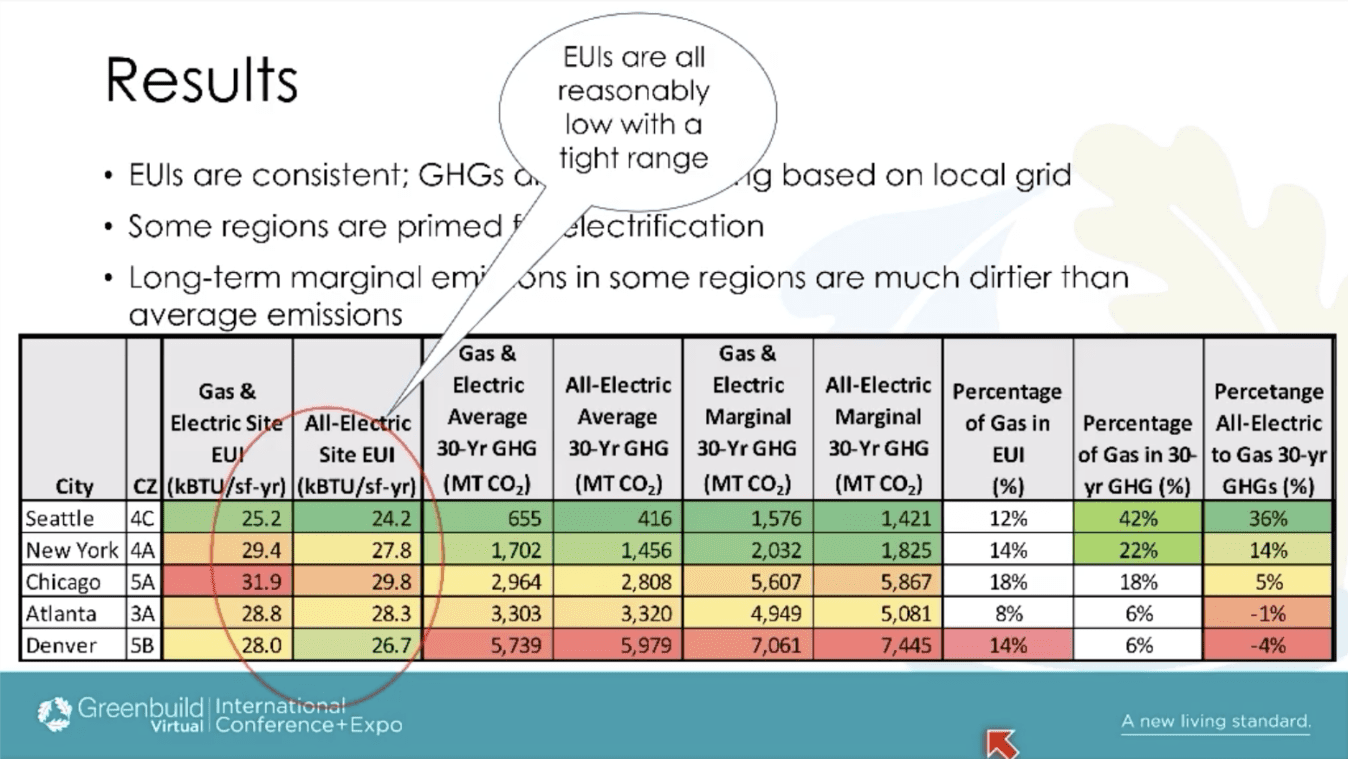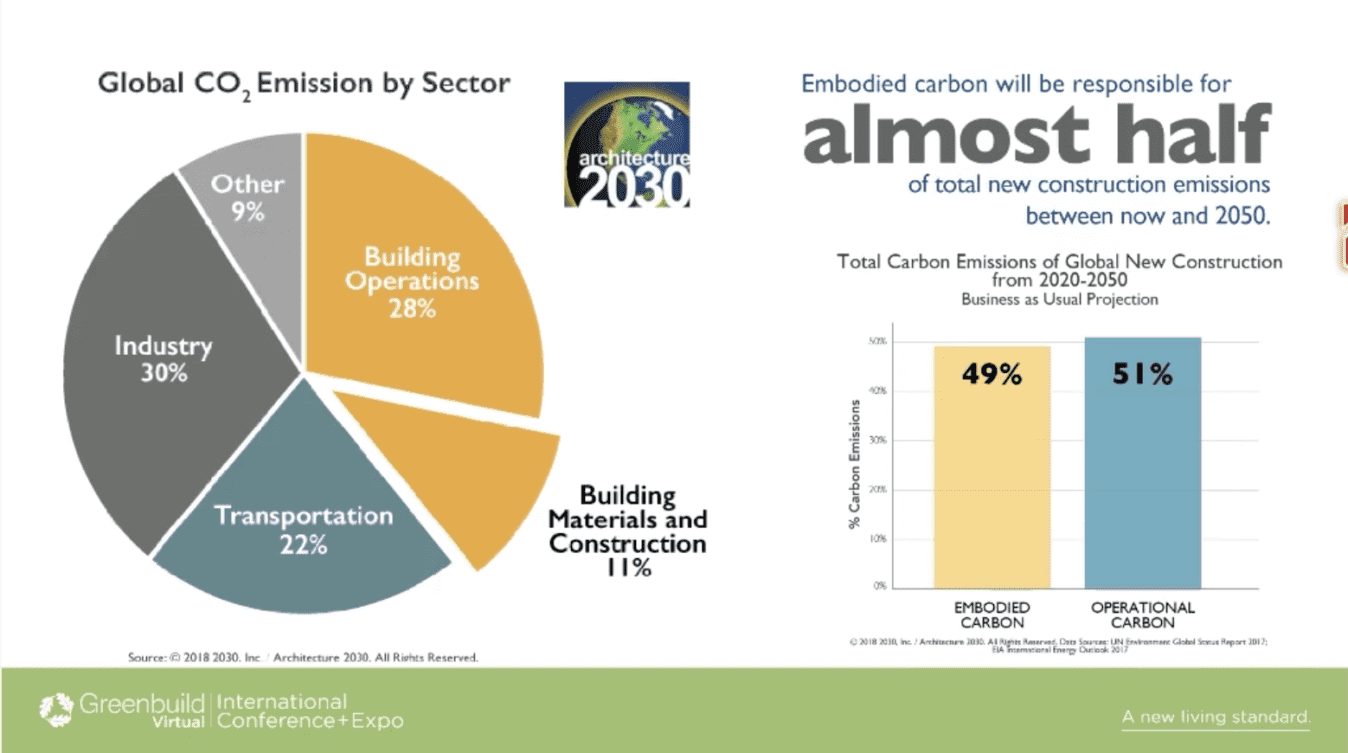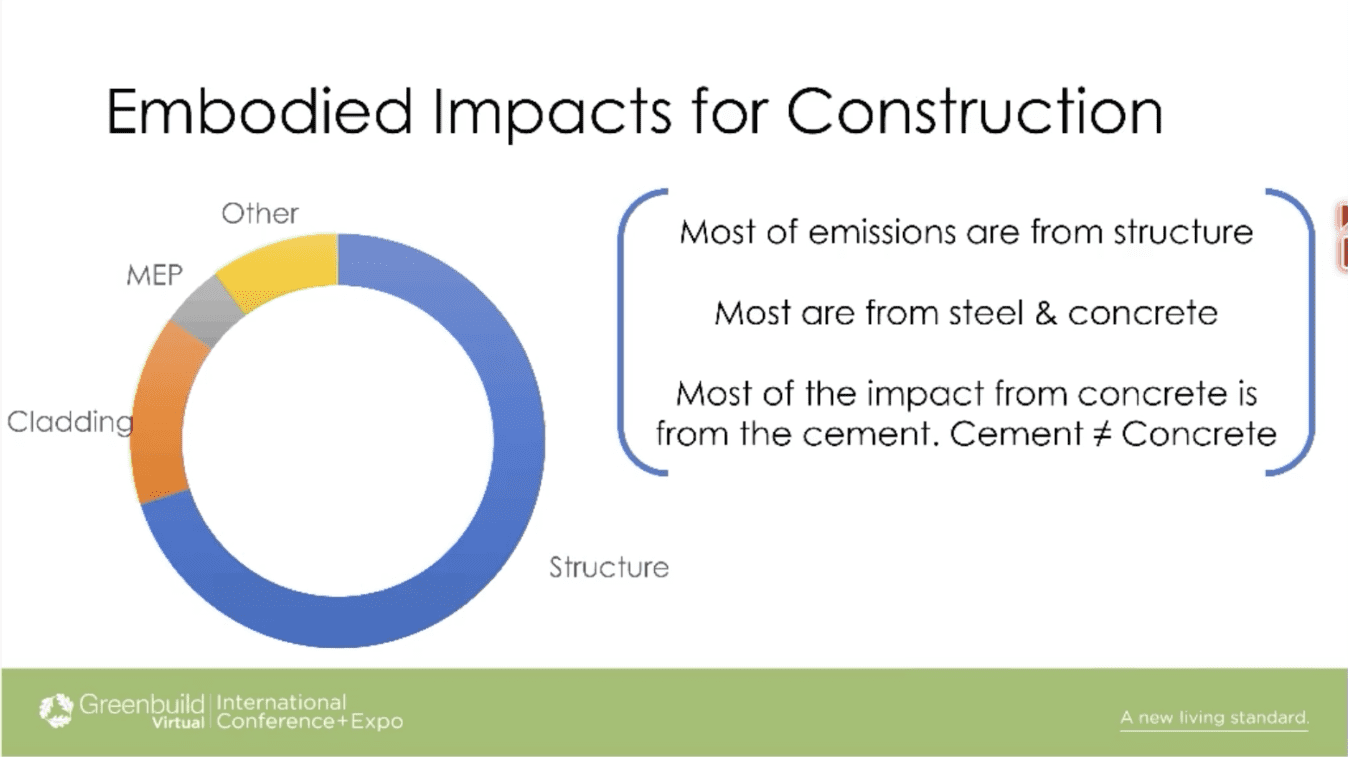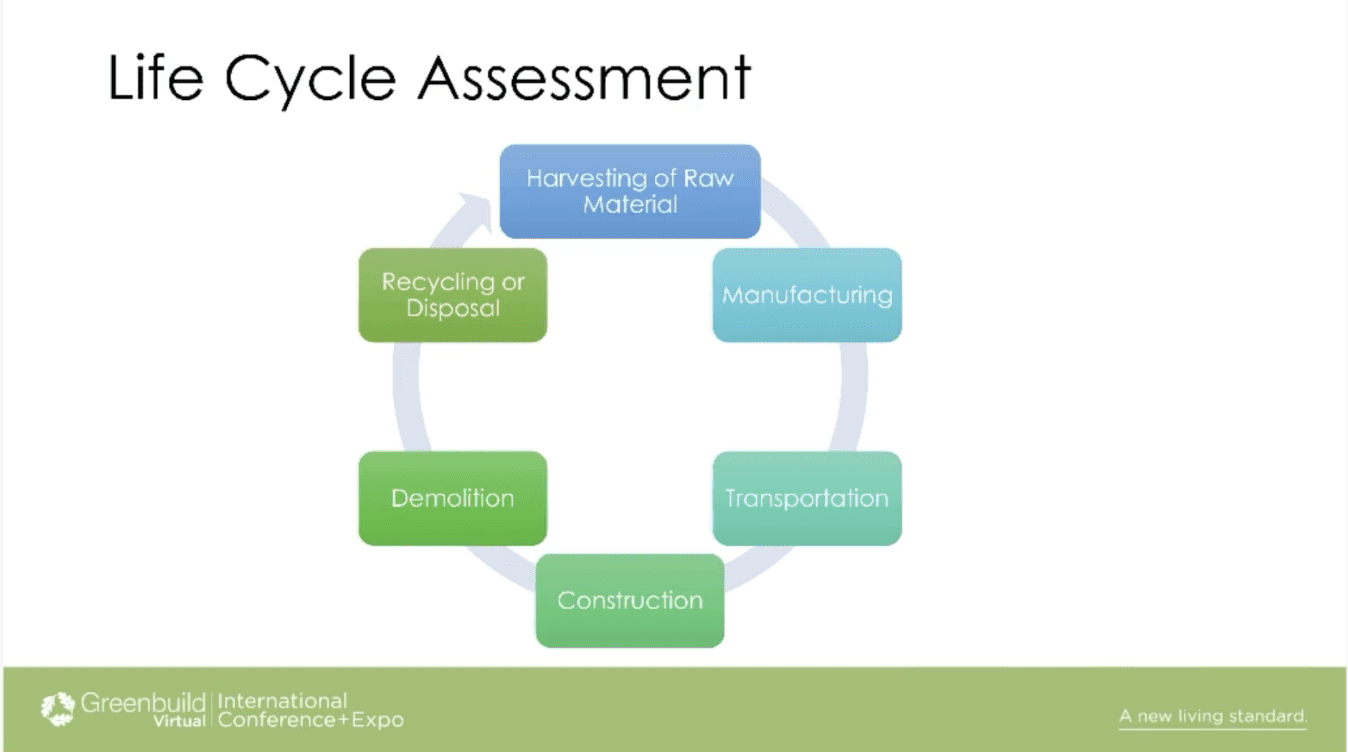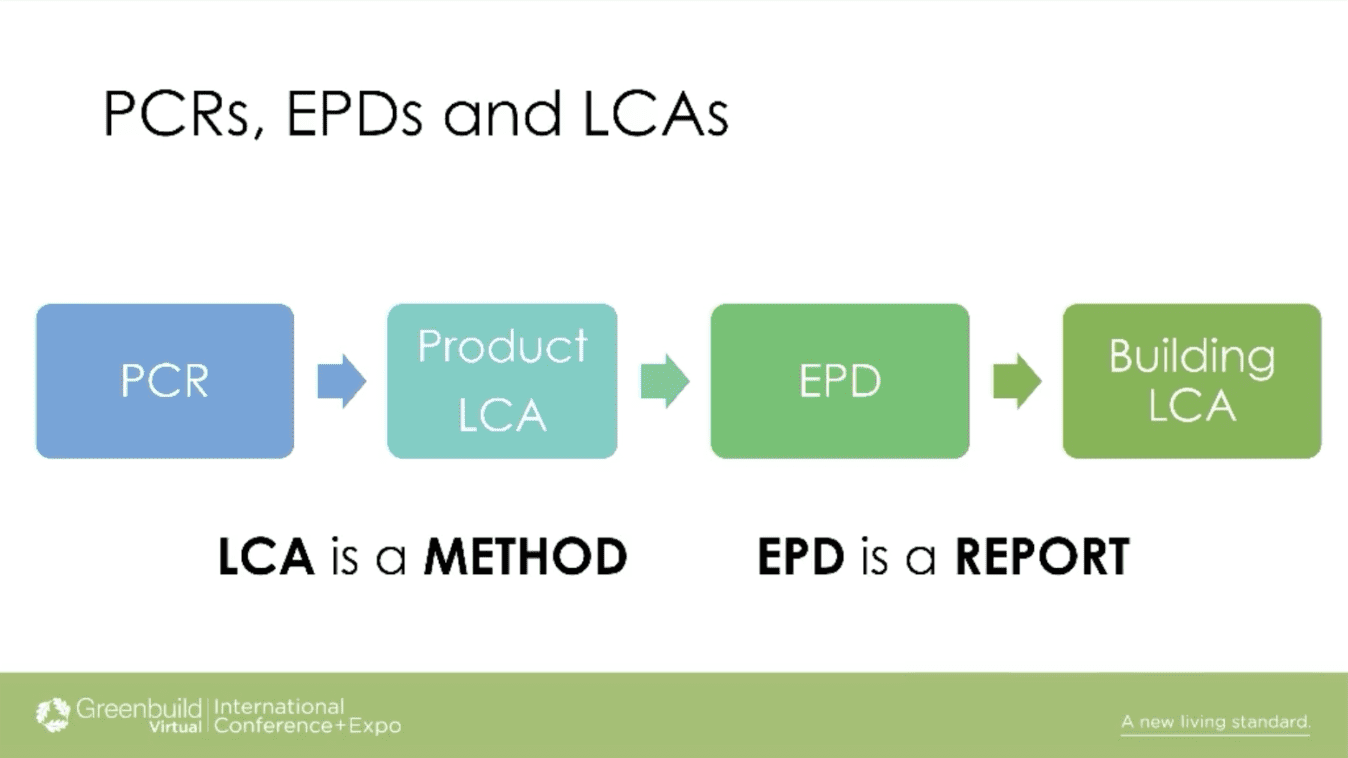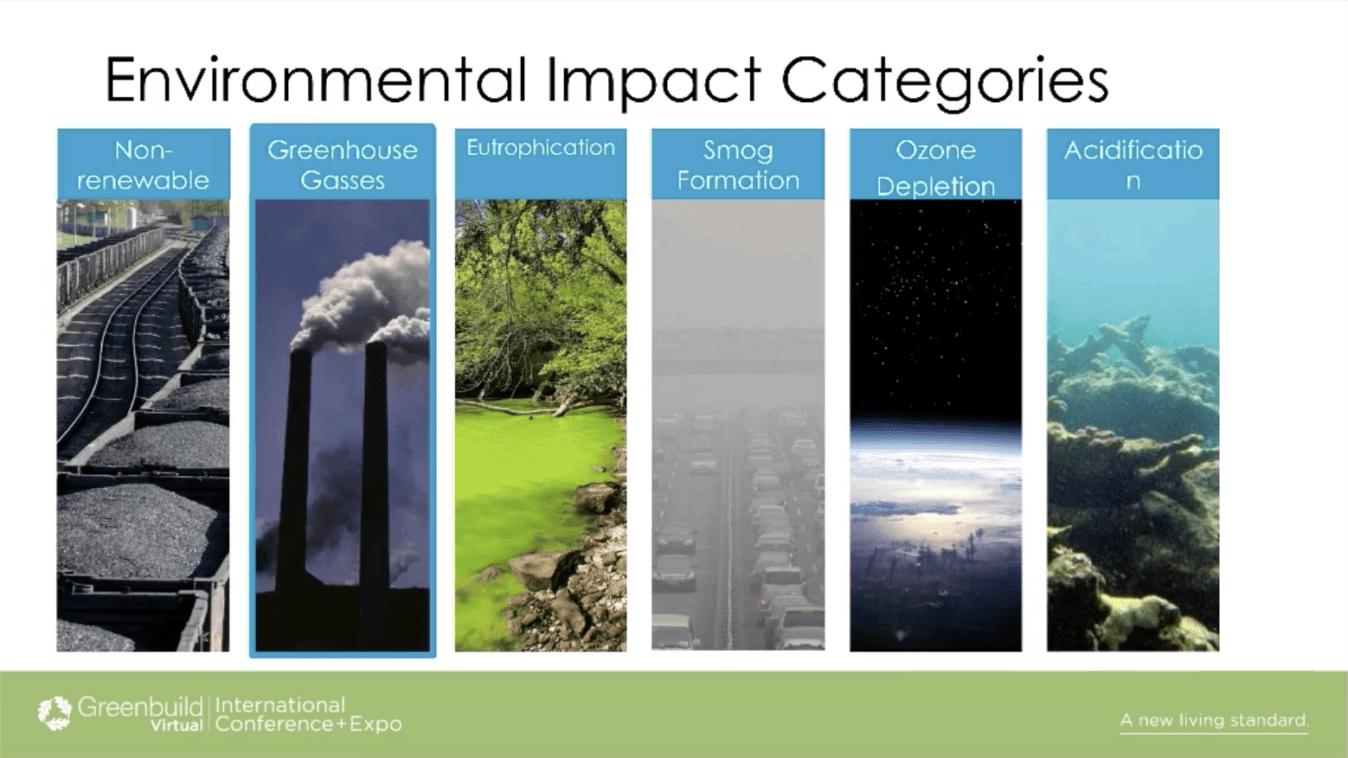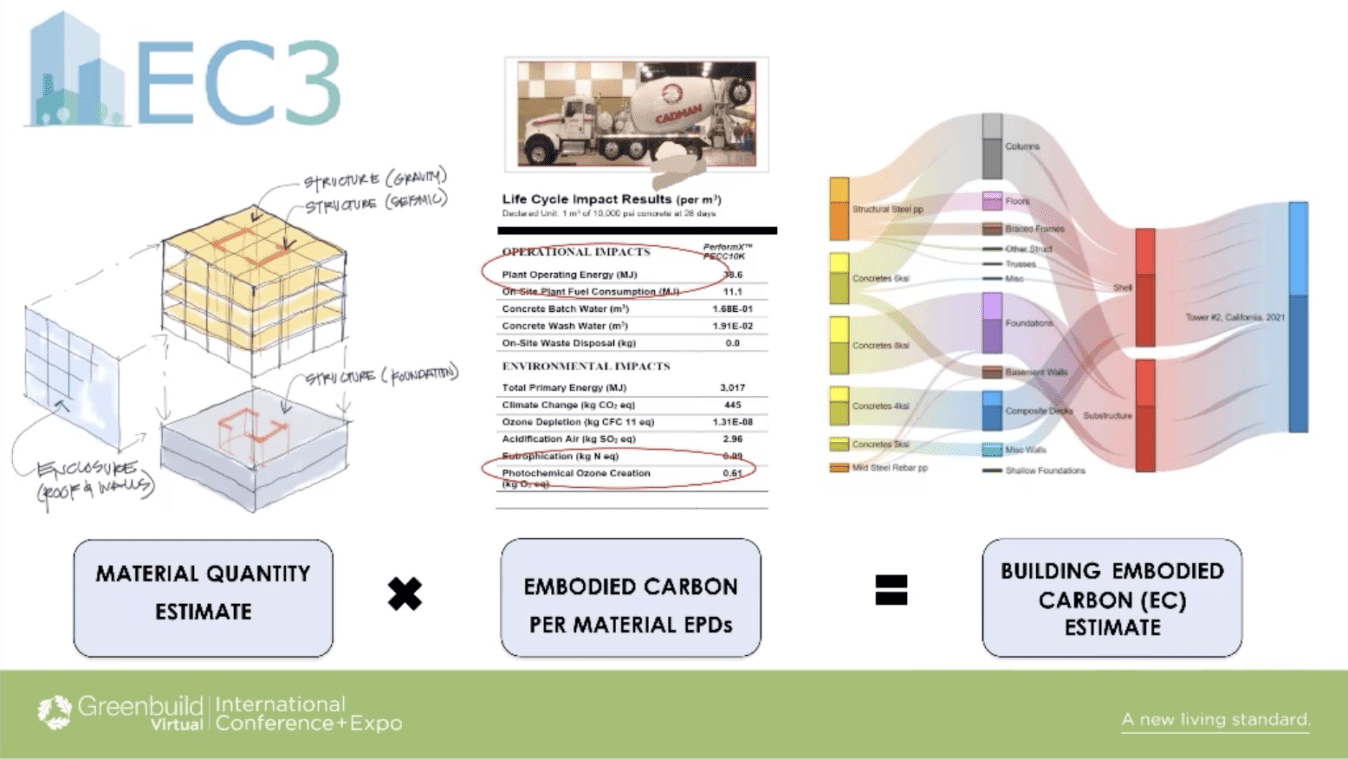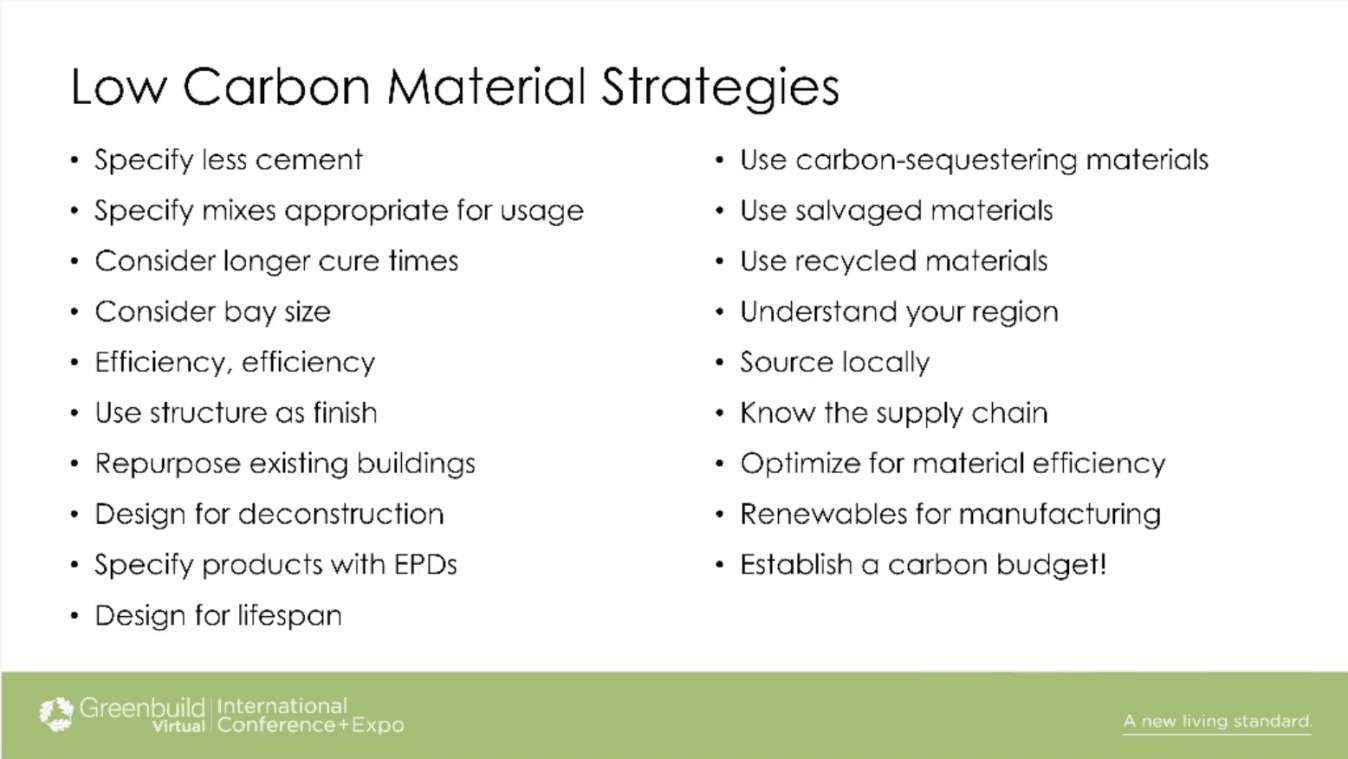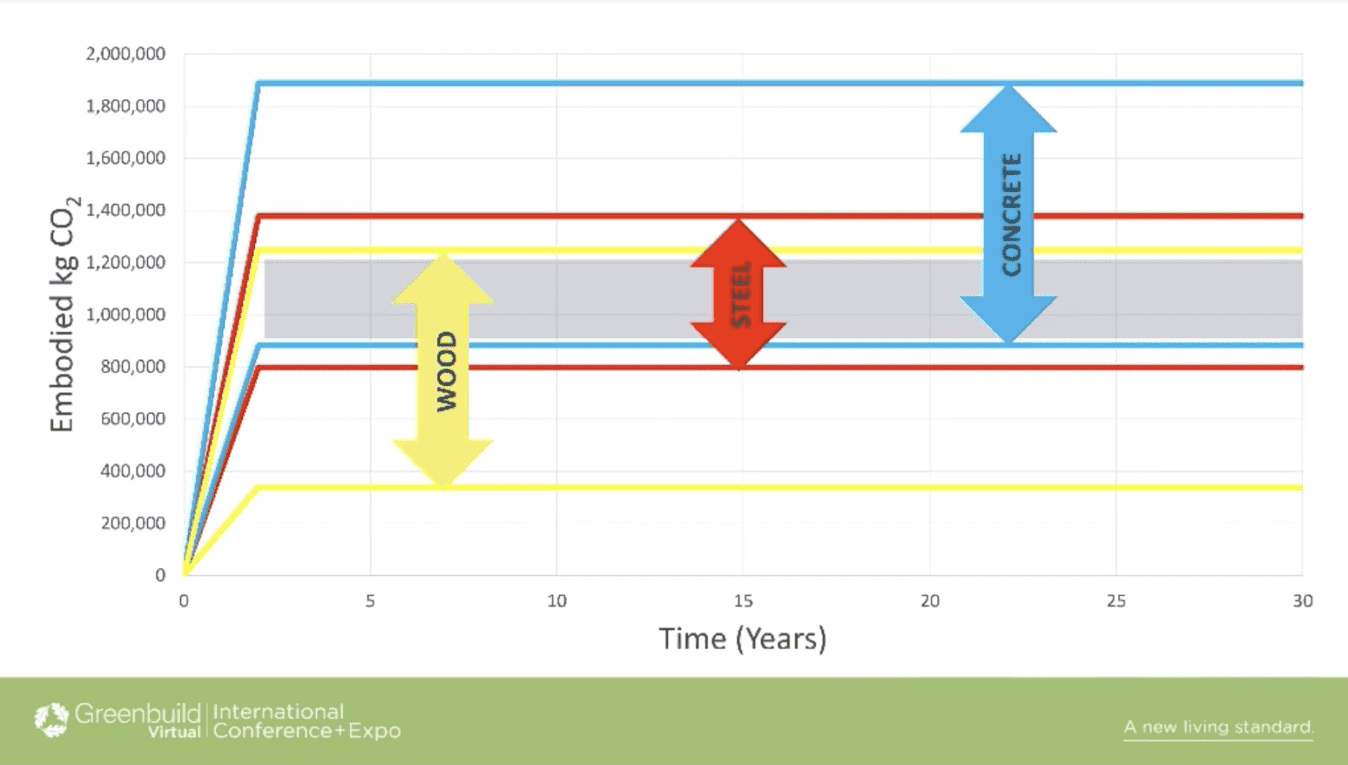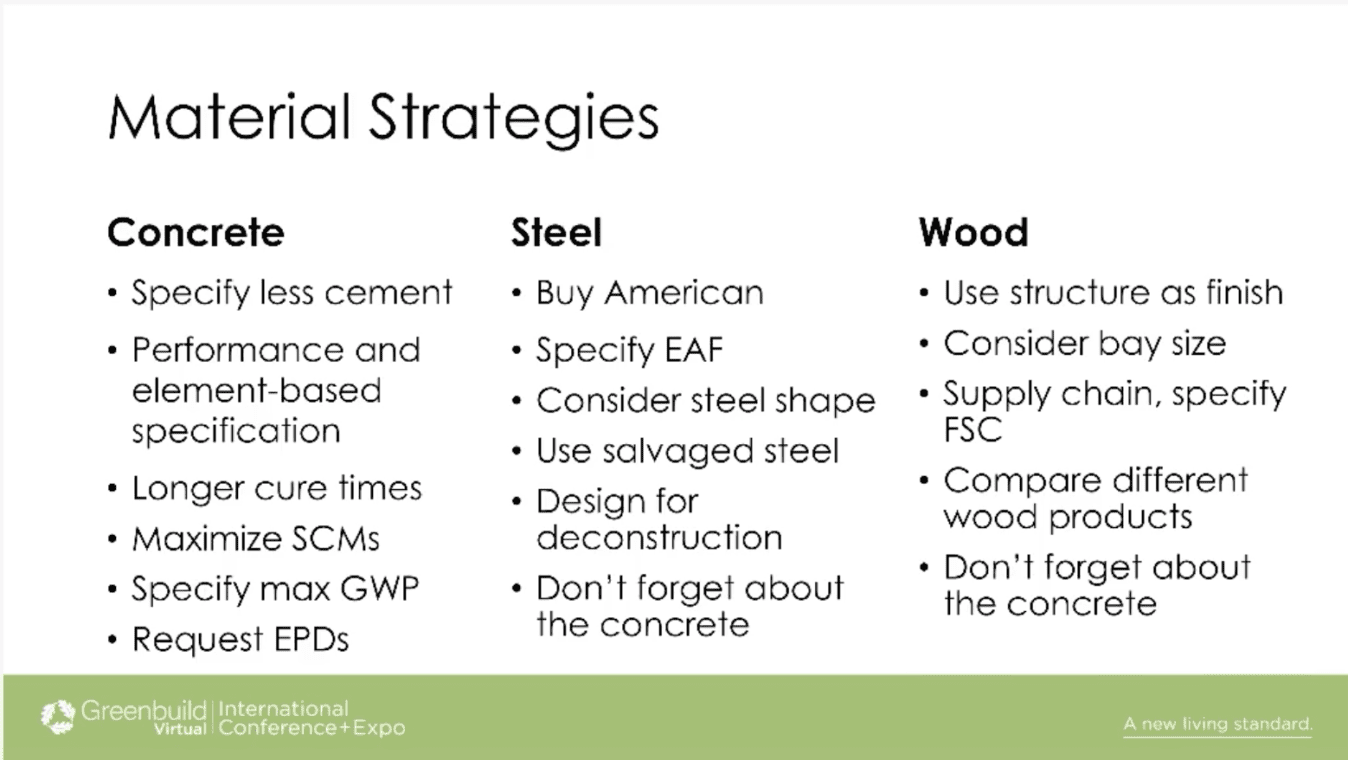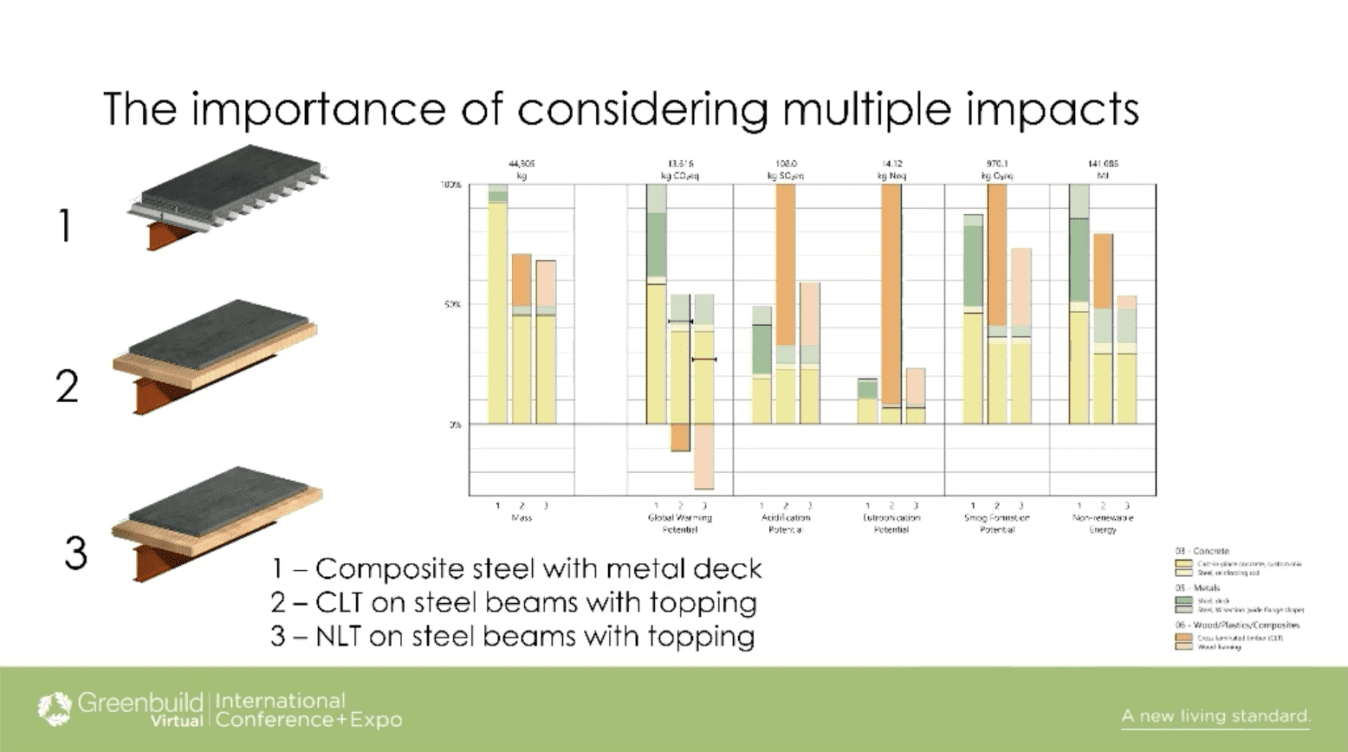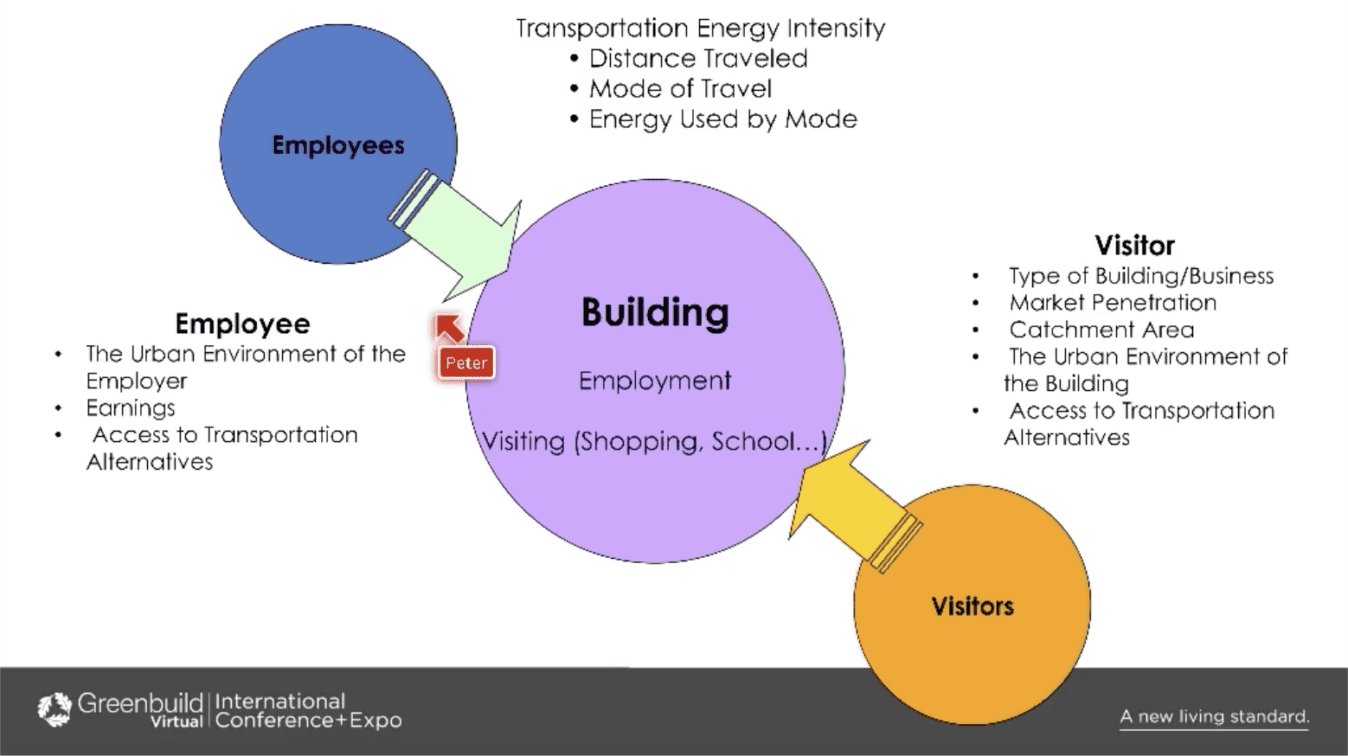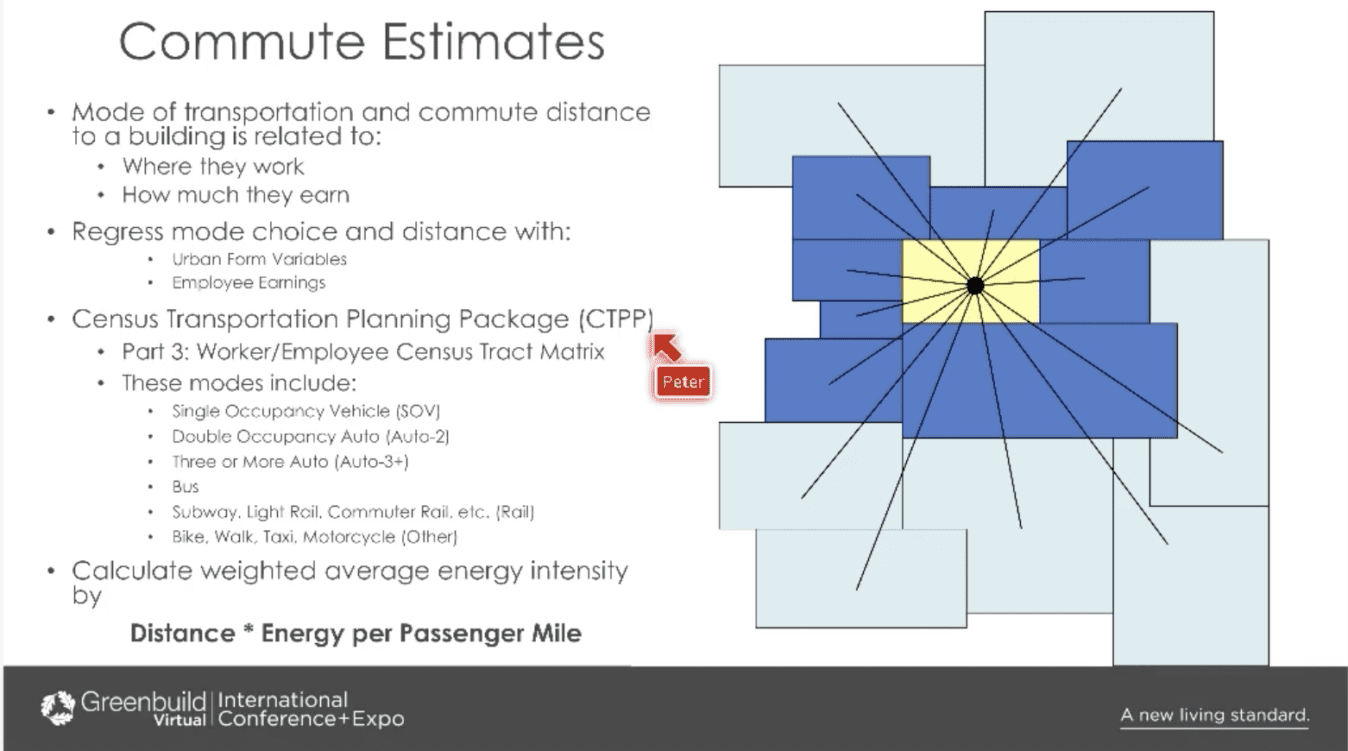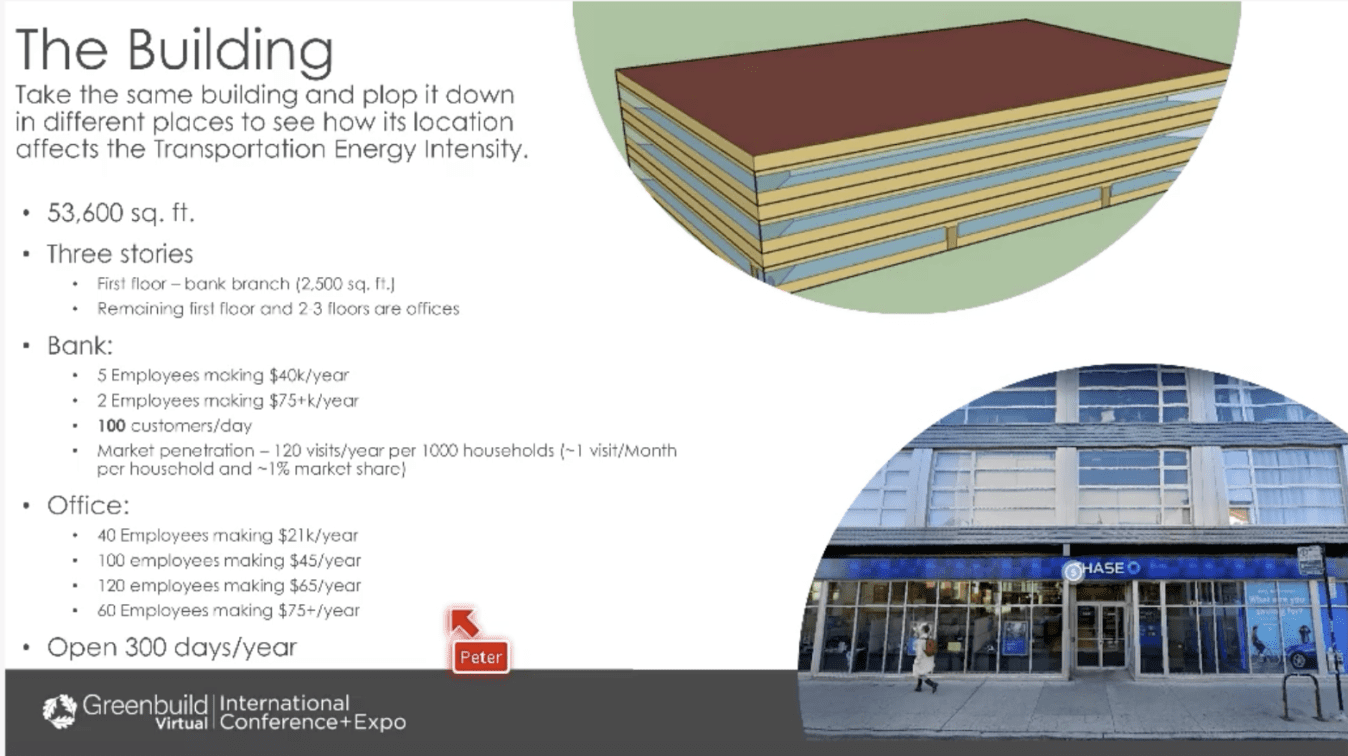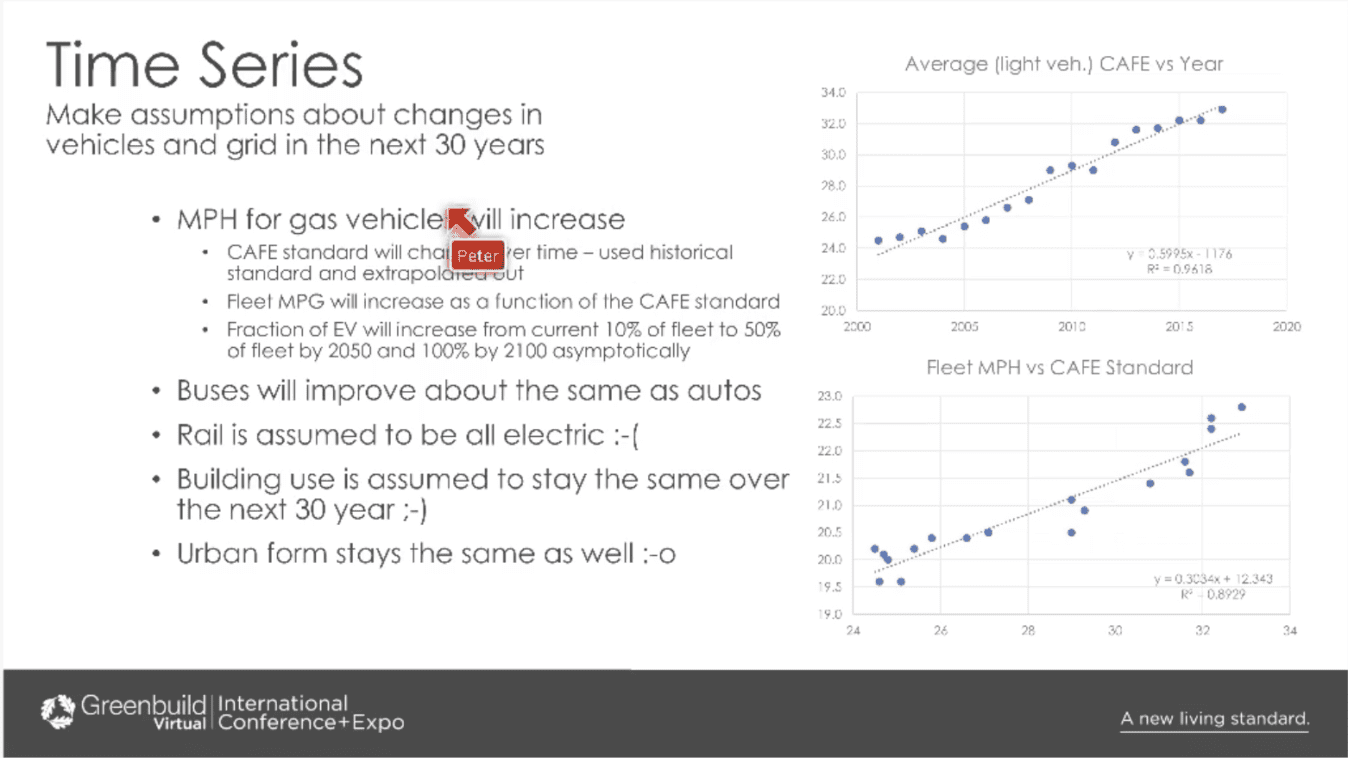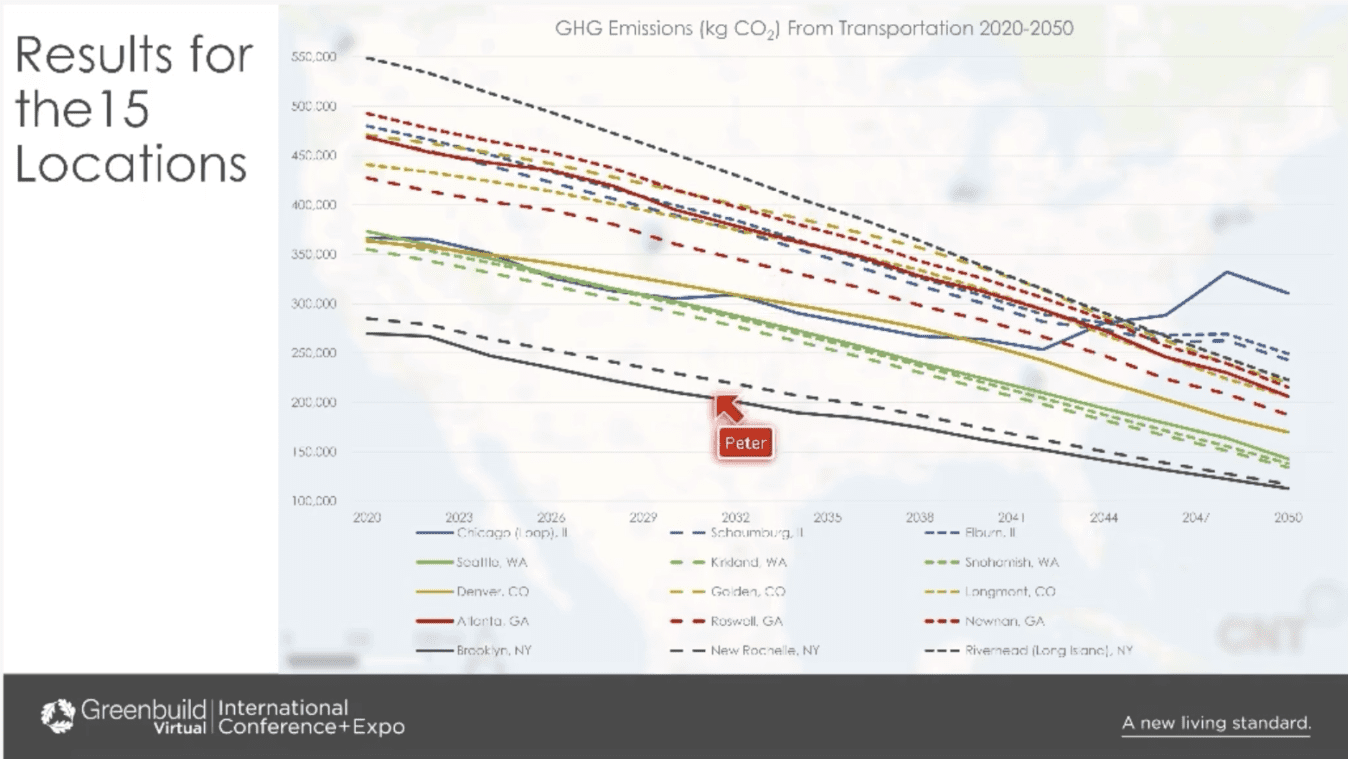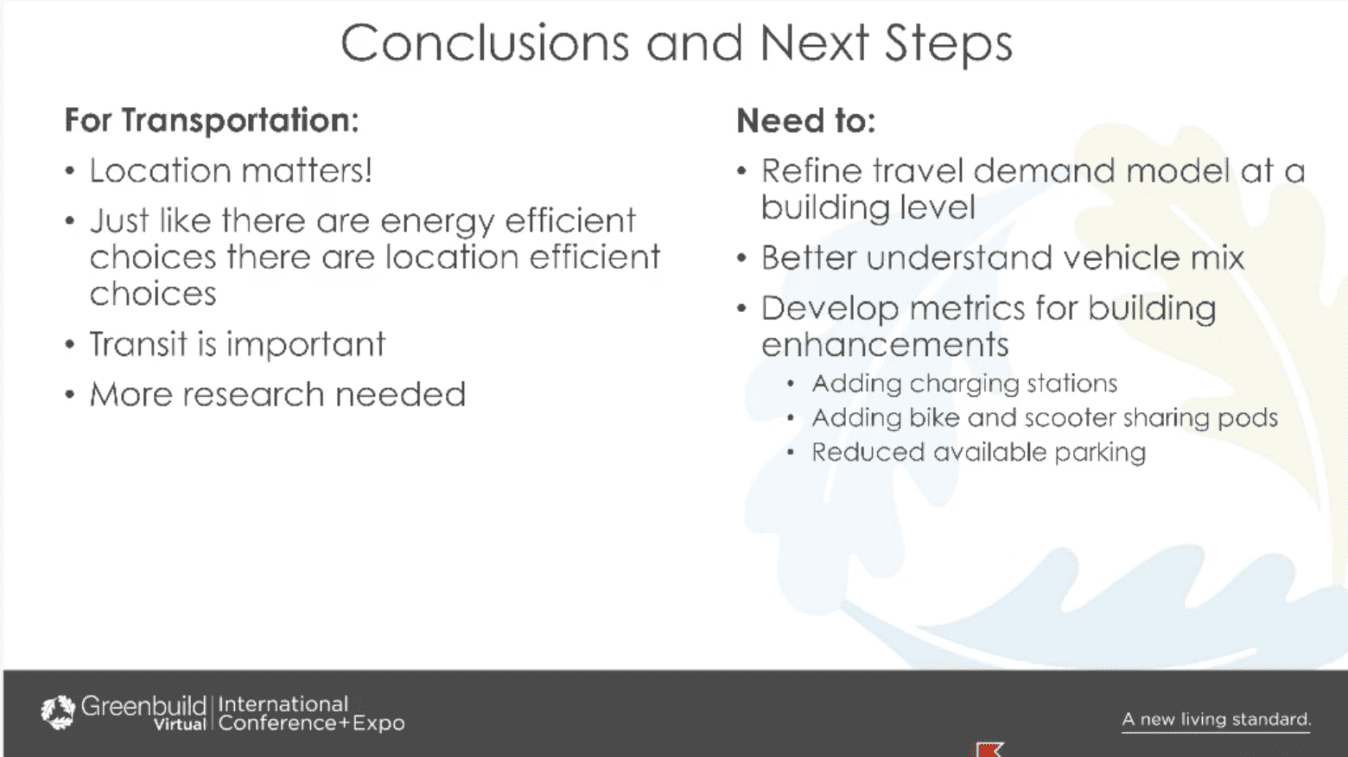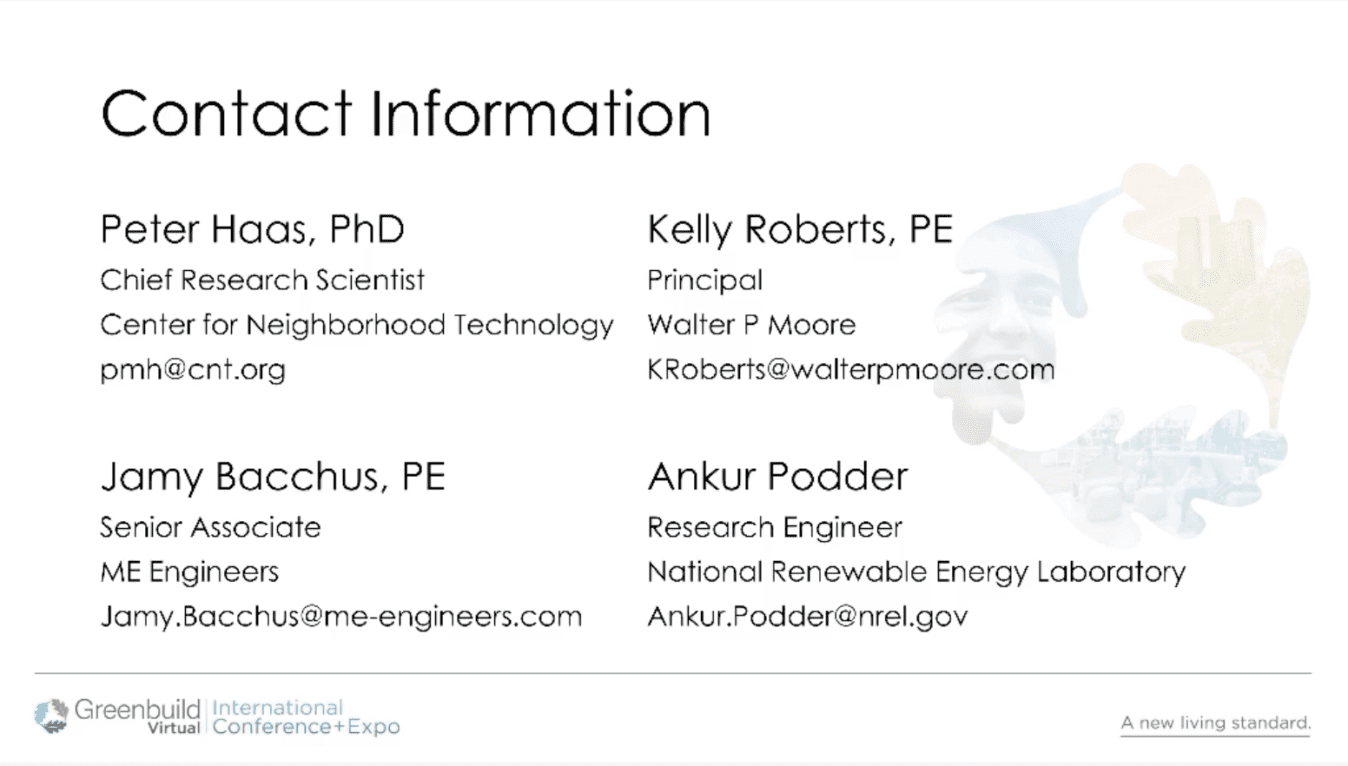Editorial, “This presentation gave us some insight into how to describe and quantify embodied carbon, especially for transportation. It’s frighting what is predicted to happen by 2050. Location, location, location is so important but the doubling of population by 2050 compounds the problem. None of the 2020 Greenbuild presentations addressed the population boom. This unspoken reality seems to ignore population growth. The Green Building movement has evolved to include more than just energy efficiency but how do you evaluate doubling your energy requirements without increasing the space you use, the resources used and the continued extinction of other species? Something is missing in the discussion.”
Suboptimization of carbon reduction strategies is unavoidable when significant portions of a project’s greenhouse gas (GHG) emissions are ignored.
Traditionally building energy performance in energy codes and rating systems have used energy cost metrics. Net zero definitions typically use annual energy consumption as a metric. Some codes and standards are moving toward energy use intensity. Occasionally building energy use is converted into GHGs with annual emissions factors. With electrical grids decarbonizing and regionally varying based on seasonally available renewables, hourly grid emissions data are better predictors of energy consumption-related GHGs.
Meanwhile as net zero codes reduce building energy use, the carbon emissions related to the construction materials increase as a percentage of the project’s overall GHGs. This has raised awareness of embodied energy and carbon. Nevertheless, too few are utilizing these tools to reduce their carbon footprints which largely occur during construction.
Transportation emissions can easily eclipse both operational and embodied carbon, yet project’s transportation-related emissions are rarely attributed to the property, which undermines the importance of location efficiency. Transportation alternatives vary across every metropolitan region. Electric vehicle uptake will also vary geographically. LEED Zero Carbon is a rare exception with the inclusion of transportation-related emissions, but the rating system is only applicable to existing buildings, when the projects are out of the designers’ control.
Designers need tools to assess all their projects’ lifetime GHG emissions prior to construction to make informed decisions regarding choices which have larger impacts on reducing carbon emissions related to the built environment. Excluding any of these components in a net zero definition, risks suboptimization at the expense of the possibility of a more climate-responsive design. Our panel will review methodologies with examples to assess all these elements over a 30-50-year timescale during the design phases of a project to Design for LEED Zero Carbon.
LEARNING OBJECTIVES:
Grasp how electrical grid decarbonization will vary emissions over time–hourly to annually and from region to region–while learning the distinction between average emissions and marginal emissions.
Learn how to apply hourly electrical grid emissions profiles to energy models’ hourly results to create annual and lifetime building energy use carbon emissions (included in LEED Zero Carbon).
Discover tools and methods to assess the location efficiency and transportation energy intensity of a given project site for a proposed project type (included in LEED Zero Carbon).
Understand life cycle assessment (LCA) methodology and available Whole Building LCA tools to identify strategies to reduce embodied carbon on projects (not currently included in LEED Zero Carbon).
CE HOUR(S): 1.5
GBCI, AIA LU HSW
Ankur Podder
Research Engineer
National Renewable Energy Laboratory
Ankur joined the Commercial Buildings Research Group at NREL in 2019 as a Research Engineer, with a focus on buildings advanced manufacturing and integration science. His work includes facilitating integration of a wide range of energy-efficient strategies and distributed energy resources during factory production of permanent modular buildings, strategizing the blending of factory information modeling and building information modeling into NREL’s building energy modeling capabilities, and accelerating whole-buildings systems integration in upcoming net-zero energy buildings. Ankur gained academic and research training on advanced manufacturing, life-cycle assessments, and buildings energy from Massachusetts Institute of Technology (MIT); entrepreneurship and economics from courses at Harvard Business School; and architectural and building sciences/technology from Birla Institute of Technology. At MIT, he developed digital design-manufacturing methods to quantify and lower material-embodied energy during new construction.
Jamy Bacchus
Senior Associate
ME Engineers
Jamy Bacchus is a mechanical engineer, energy modeler, sustainability consultant and policy advocate at ME Engineers whose passion is mitigating the energy-related impacts of the built environment. He has over 25 years of experience designing HVAC systems for green buildings and net zero energy projects including previous work at Integral Group, Arup, WSP and Battle McCarthy. He worked for NRDC developing energy policy for the built environment through California’s Title 24 Part 6 & Part 11 (CALGreen) standards and federal appliance standards. He currently serves on the LEED EA TAG. Jamy has lectured at Columbia University, CUNY and Stanford University on integrated green building design strategies. He has authored and presented peer-reviewed papers on diverse topics from alternative net zero definitions and policy ramifications of current metrics to cost effectiveness of urban infill using various construction methods at ACEEE Summer Study on Energy Efficiency in Buildings, Greenbuild and CTBUH.
Kelly Roberts
Principal
Walter P Moore
Kelly Roberts , P.E., LEED AP BD+C is a Principal and Project Manager at Walter P Moore with structural design experience ranging from educational and healthcare facilities to high-rise office towers. She leads WPM’s Sustainable Design Community of Practice for the structures group; specializing in Whole Building Life Cycle Assessment and the use of sustainable and salvaged materials. She is a founding board member of the non-profit material reuse center, the Lifecycle Building Center of Greater Atlanta, where she currently serves as an Advisory Board member. Kelly is a Market Leadership Advisory Board member of USGBC Georgia and was the co-chair for the 2019 Greenbuild Legacy Project. She is the current President of ACI Georgia, a Steering Committee member for AIA Atlanta COTE, a member of the ACI 318 Sustainability Committee and an active member of the Carbon Leadership Forum. She is the founding chair of the NCSEA Sustainability Committee and an Advisory Council member of the SEI Sustainability Committee’s SE 2050 task force. Kelly was named as one of the 100 Most Influential Women by Engineering Georgia Magazine and is a 2017 Design Futures Council Emerging Leader and an ENR Magazine Top Young Professional.
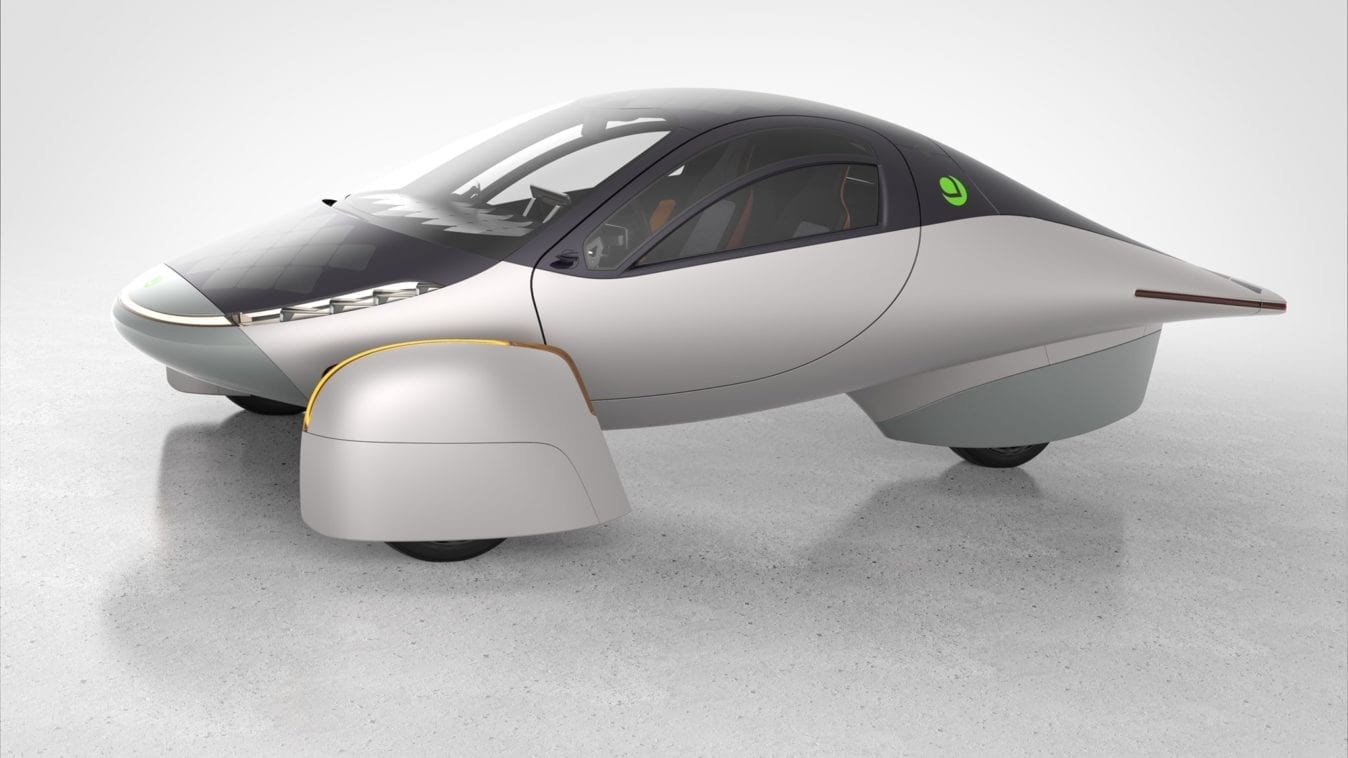
Get $30 off your Aptera Pre-Order
Click this link and you’ll receive a promo code for $30 off an Aptera pre-order. The 2nd Generation Aptera launched Dec. 4, 2020 and is on track to be the first self charging electric vehicle. The two-person, three-wheeler is covered with solar panels which allow self-charging but it also comes with a plug for charging. For every person I refer, I’ll earn a $1,000 credit towards an Aptera. After referring 26 people, I’ll score a free standard edition model. I’m a volunteer Aptera Ambassador, read more about this incredible solution to beautiful design and the ultimate in sustainability! Thanks for your referral, Chuck Lohre, Editor, Green Cincinnati Education Advocacy. #aptera #apteramotors

